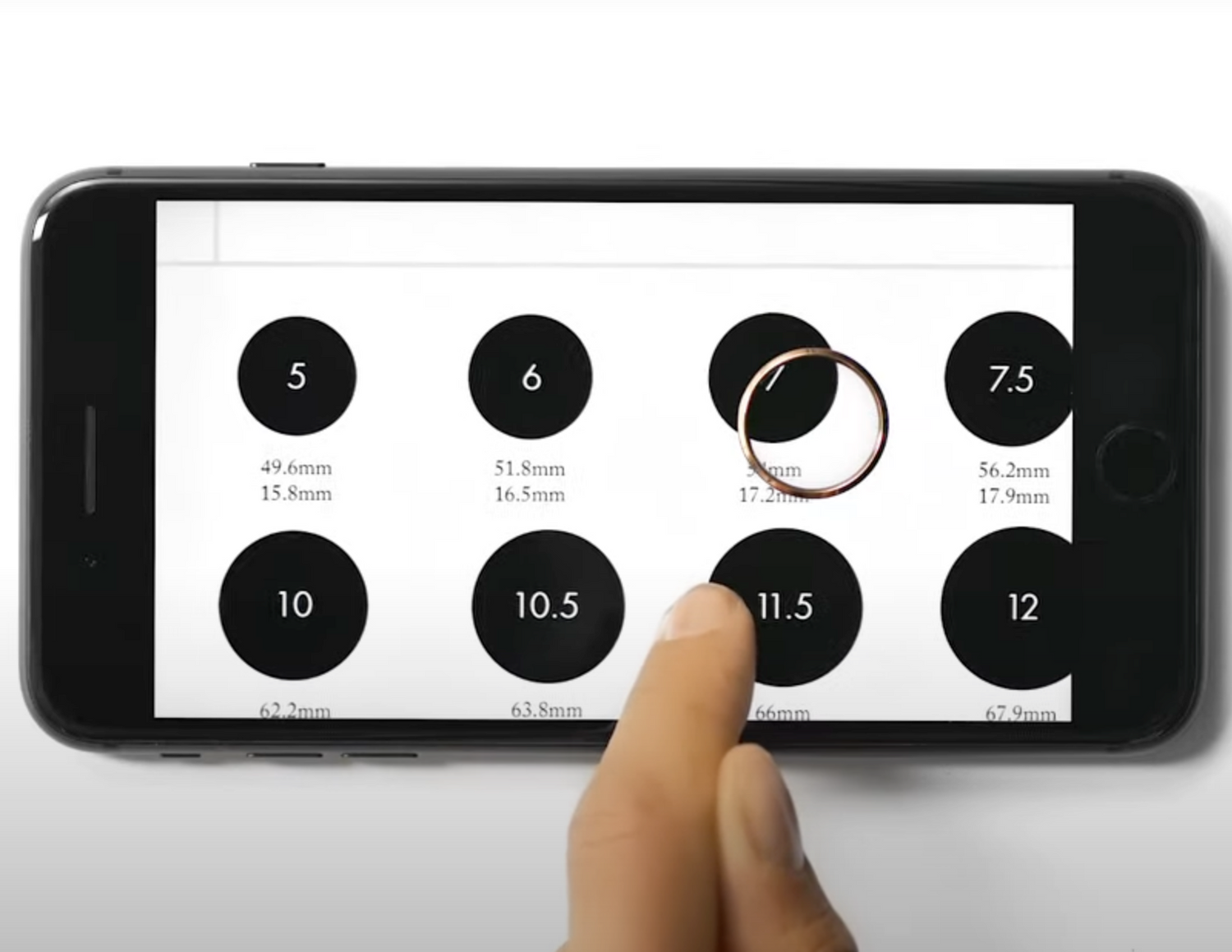Ring size chart
Ring size charts help you find the right fit by comparing your finger measurement to standardized sizes across different regions. Different countries use various sizing systems—like numbers in the US and Canada, letters in the UK, and millimeter circumferences in Europe. These variations exist due to historical and measurement differences, so a size in one country might not match the same size elsewhere. When buying rings internationally, use a ring size chart to convert between systems and ensure a perfect fit.
|
US/Canada |
UK/Australia |
Europe |
Japan |
Switzerland |
|
4.0 |
H |
46.5 |
7 |
7.75 |
|
4.5 |
I |
48.0 |
8 |
8.5 |
|
5.0 |
J |
49.0 |
9 |
9.25 |
|
5.5 |
K |
50.3 |
10 |
9.75 |
|
6.0 |
L |
51.5 |
11 |
10.25 |
|
6.5 |
M |
53.1 |
12 |
11.0 |
|
7.0 |
N |
54.4 |
13 |
11.75 |
|
7.5 |
O |
55.7 |
14 |
12.25 |
|
8.0 |
P |
57.0 |
15 |
13.0 |
|
8.5 |
Q |
58.3 |
16 |
13.5 |
|
9.0 |
R |
59.5 |
17 |
14.25 |
|
9.5 |
S |
60.8 |
18 |
15.0 |
|
10.0 |
T |
62.1 |
19 |
15.75 |
|
10.5 |
U |
63.4 |
20 |
16.25 |
|
11.0 |
V |
64.6 |
21 |
17.0 |
|
11.5 |
W |
65.9 |
22 |
17.75 |
|
12.0 |
X |
67.2 |
23 |
18.25 |
|
12.5 |
Y |
68.5 |
24 |
19.0 |
|
13.0 |
Z |
69.7 |
25 |
19.75 |
|
13.5 |
Z+1 |
71.0 |
26 |
20.25 |
|
14.0 |
Z+2 |
72.3 |
27 |
21.0 |
|
14.5 |
Z+3 |
73.6 |
28 |
21.75 |
|
15.0 |
|
74.8 |
29 |
22.5 |
Ring size by cm or inches
In the US and Canada, the ring sizes are numerical and do not directly correspond to inches or centimeters. The sizes are derived from the internal circumference or diameter of the ring, but the size numbers themselves are part of a standardized scale.
In the UK and Australia, the ring sizes use an alphabetical system (e.g., H, I, J) rather than being directly tied to measurements in inches or centimeters. Similar to the US system, these sizes correspond to specific internal circumferences or diameters, but the letters themselves are part of a unique scale.
